
The Hönggerberg Campus of the E.T.H. Zürich
The Hönggerberg campus provides an impressive monument to steel, glass, and concrete design and construction; recently it sprouted five new, massive chemistry buildings. Cranes still tower in several places over further expansions. Built in grand style and maintained with meticulous care, the new campus offers a modern spendor that is difficult to find in other university settings. The various structures there have received many architectural awards, and the E.T.H. is proud of its department of architecture.
Starting from the Hauptgebaude, or from downtown, one can reach the new campus by the tram and bus in about half an hour. Recently the E.T.H. renamed the Hönggerberg campus as "Science City." Right at the traffic light where one enters the campus, one sees two signs of welcome:
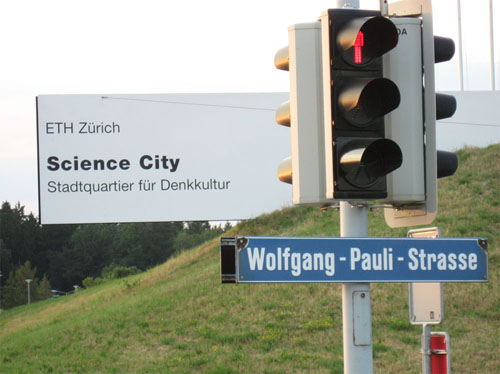

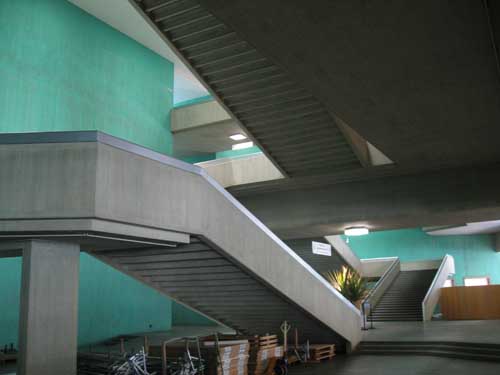
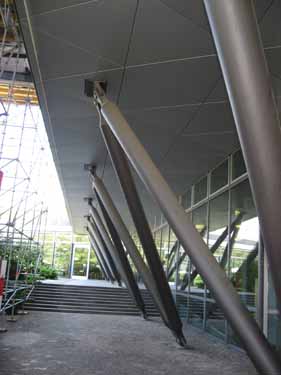
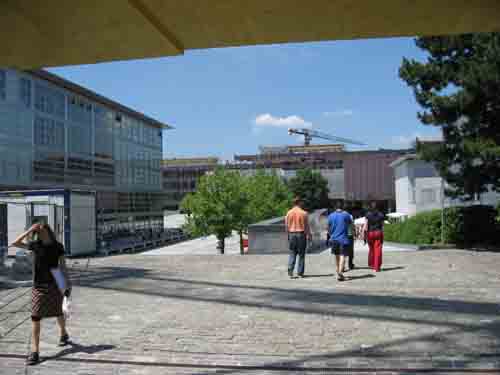
The latest additions include a row of five gigantic chemistry buildings. The chemistry restaurant and faculty club are housed in the building on the far left. However, the theoretical physicists generally have lunch in the physics restaurant nearby.

The physics buildings all by themselves make up a small city! The physics restaurant and student Mensa share the building with the huge physics lecture halls:
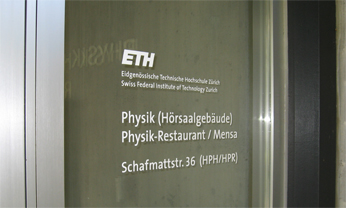
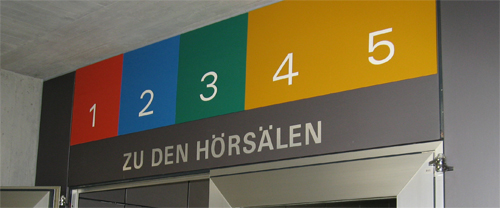
Here are some typical lunch-time scenes in the physics restaurant:
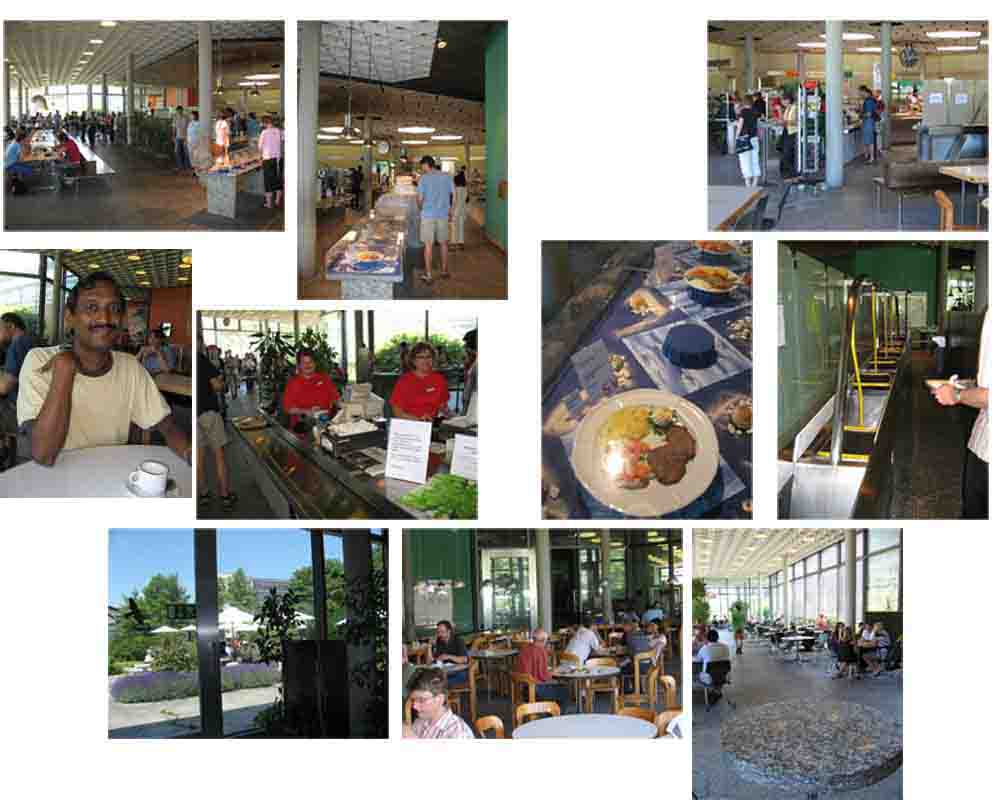
While theoretical physics is not very large at the E.T.H., it does have its own building. This bears the name HPZ (Hönggerberg Physik Zentralgebäude). Next to this building on the basement level is an artificial pond. Behind HPZ is the classroom building HPP, which also houses some groups such as geophysics.


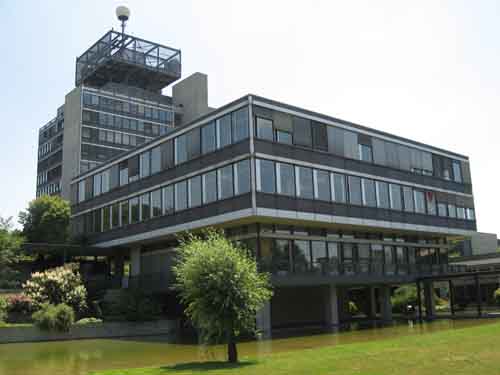
I used an office toward the end of my stay at the E.T.H. in 2006 on the ground floor of HPZ, while Maurice Rice was away in the United States. Here is how it looked from outside and in:

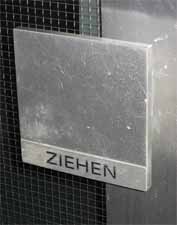
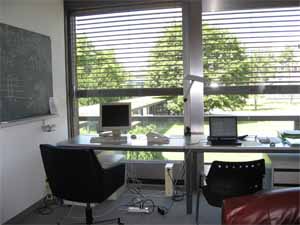
On the ground floor of HPZ is the Pauli room for more formal seminars. In the back of the room is a portrait of Wolfgang Pauli.
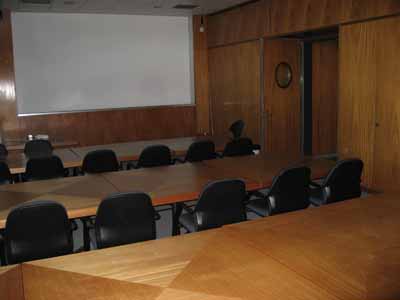
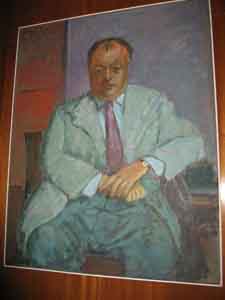
One the top floor two levels higher one finds the secretaries, many offices, and the informal seminar room/coffee room. There is a photo of the great E.T.H. mathematician and physicist Hermann Weyl in the corner. A very important corner to this room houses the coffee machine, currently a Jura X95, which is extremely reliable and has heavy use. While these photos do not show many people in the room, that is unusual. The tables provide a place for constant informal discussion and a casual meeting place, as well as a place lectures, celebrations, etc.
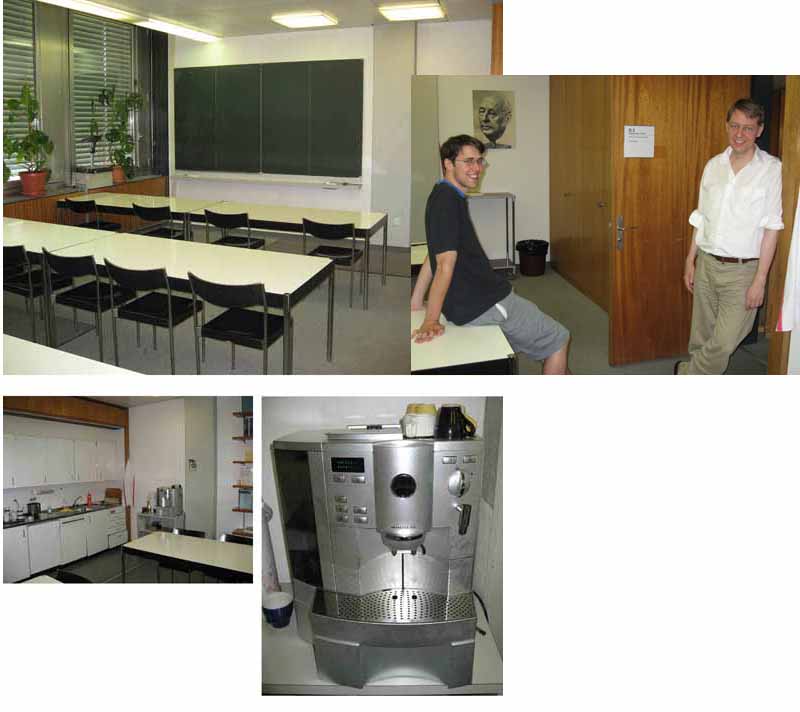
Theoretical physics has three secretaries; here is Etusch in front of the photo gallery on the top floor:
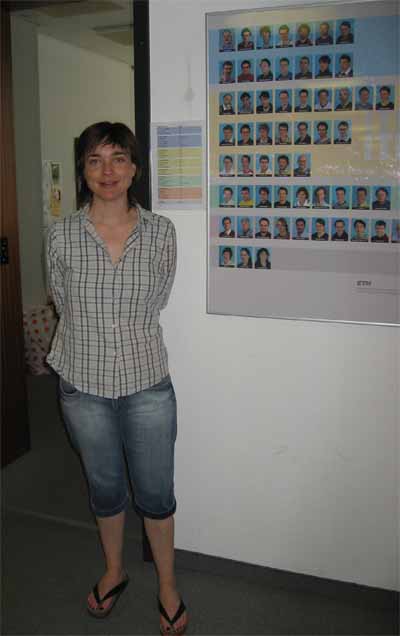
In the summer of 2005, the physics department conceived an event called "Nacht der Physik." In order to attend, I returned from a trip to Dublin one day earlier than originally planned. That turned out to be just the right decision; I was blown away by the success of the event!


















